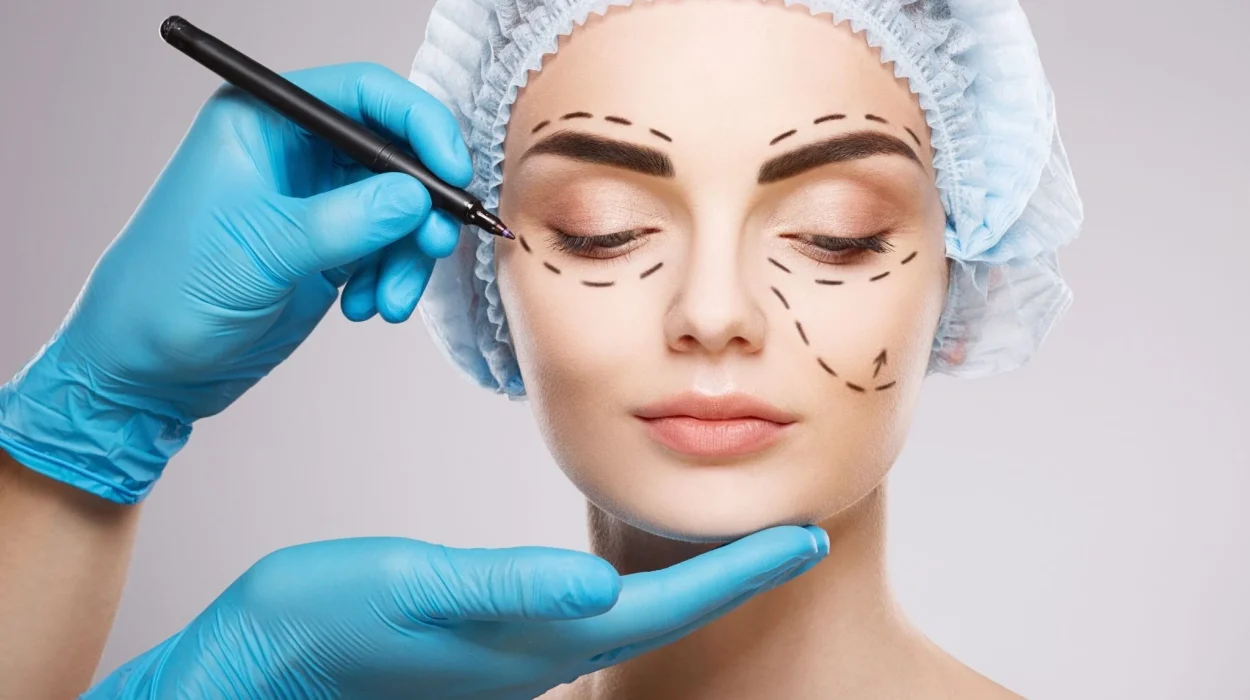If you think Botox treatment is meant for cosmetic improvements, you are not alone! Not many people are aware that Botox, which is widely known for its cosmetic benefits, also helps manage and treat medical conditions.
The FDA has approved the use of Botox to treat an overactive bladder, urinary incontinence, chronic migraines, cervical dystonia, strabismus (cross-eyes), hyperhidrosis (excessive sweating), and spasticity.
Let’s learn more about the medical uses of Botox in this blog!

Botox for migraines
One of the most effective uses of Botox for medical conditions is treating migraines. Migraines are chronic conditions characterised by severe throbbing headaches, sensitivity to light, nausea, and fatigue. While the exact cause of migraines is not known, they may be related to overactive neurotransmitters (brain chemicals).
Botox injections are FDA-approved to treat chronic migraines and are recommended for people who experience 15 or more migraine episodes every month, each lasting more than four hours. Most people who have undergone Botox treatment for their migraine have experienced a reduction in the frequency, intensity and duration of episodes.
The number of Botox treatment sessions you require for migraines varies, depending on the type of migraine, number of episodes and severity of symptoms.
How does Botox work to reduce migraine?
The botulinum toxin injected disrupts the overactive neurotransmitters' functioning, reducing the intensity of symptoms.
Most people require follow-up sessions to prevent the recurrence of migraine attacks.
Botox for excessive sweating (Hyperhidrosis)
Hyperhidrosis is characterised by excessive sweating and occurs when the sweat glands become overactive. This sweating is unrelated to exercise, temperature, or other usual triggers and usually affects the hands, armpits, and soles of the feet, chest, head, and face.
While hyperhidrosis is not a serious health concern, it is often embarrassing and uncomfortable to the individual, prompting them to seek treatment.
When the usual treatment modalities, such as antiperspirants and medications, do not work, Botox may be used to manage hyperhidrosis.
How does botox works for excessive sweating?
The botulinum toxin is a neurotoxin, and when injected, it alters the nerve signals that activate sweat glands. It usually takes three to four days for the results of Botox to become evident and reduce hyperhidrosis. The number of sessions you require depends upon the area being treated. The results of Botox for hyperhidrosis typically last for upto 6 months.
According to the International Hyperhidrosis Society, people who received Botox injections for their hyperhidrosis saw their sweating decrease by over 85%.
While hyperhidrosis is not a serious health concern, it is often embarrassing and uncomfortable to the individual, prompting them to seek treatment.
When the usual treatment modalities, such as antiperspirants and medications, do not work, Botox may be used to manage hyperhidrosis.
Botox for TMJ pain relief
The temporomandibular joint (TMJ) is the jaw joint that connects the lower jaw to the skull and enables various movements while talking. TMJ disorders are common and can be caused by genetics, clenching of the jaw, or erosion from regular wear and tear of teeth.
TMJ disorders cause tension in the muscles attached to the joint, leading to symptoms
How does Botox provide TMJ pain relief?
When the botulinum toxin is injected into the joint, it relaxes the jaw muscles, releasing tension. This relieves symptoms, prevents dental issues and improves jaw function.
Botox is effective in relieving symptoms of TMJ disorder in people with TMJ-related pain or discomfort and bruxism (teeth-grinding habit).
At Hortman Clinics, our experts recommend multiple Botox sessions to help relieve symptoms of your TMJ disorder.
TMJ disorders cause tension in the muscles attached to the joint, leading to symptoms
Botox for muscle spasms
Muscle spasticity is when the muscles continuously contract, resulting in tightness or stiffness. Other symptoms of spasticity include uncontrollable jerking movements and spontaneous muscle contractions.
Spasticity is usually caused when parts of the brain or spinal cord that control movement are damaged. However, it can also occur as a result of conditions that affect the brain, such as cerebral palsy, spinal cord injury, brain injury, and multiple sclerosis.
People with spasticity may experience physical changes like clenched fists and pointed toes with no active control over these movements. This is very common in adults and can lead to problems with performing regular, everyday tasks.
How does Botox work to relieve muscle spasms?
In spasticity, an overproduction of acetylcholine causes excessive or uncontrolled movements. When the botulinum toxin in Botox is injected, it blocks the release of acetylcholine, a neurotransmitter that causes muscles to contract. This causes localised muscle relaxation in the injected area, thereby relieving spasms and improving the individual's range of motion.
Botox may be preferred in treating muscle spasms over systemic therapies as it can be used to target a few groups of muscles that affect the patient’s mobility. It effectively alleviates muscle stiffness and pain and improves the individual’s quality of life.
Botox for Overactive Bladder
In addition to all the medical uses mentioned so far, Botox injections are also an option for the treatment of overactive bladder or urinary incontinence in people who have not had success with other treatment options.
Botox may be preferred in treating muscle spasms over systemic therapies as it can be used to target a few groups of muscles that affect the patient’s mobility. It effectively alleviates muscle stiffness and pain and improves the individual’s quality of life.
How does Botox work here?
When the botulinum toxin in the Botox injection is administered, it helps the bladder muscles relax, reducing the urge to urinate. This allows the individual more time to get to the bathroom when they feel like urinating.
The effects of a Botox injection for an overactive bladder are long-lasting, and most people get immediate relief in just a few days. The effects of the treatment last for around six months, and your doctor may recommend additional injections to prolong the results.
Why choose Botox for medical conditions?
There are several reasons why Botox has become the preferred treatment choice in the management of medical conditions:
- It is minimally invasive and safe when administered by a qualified and experienced professional
- Proven effectiveness
- FDA-approved for multiple therapeutic uses
- Long-lasting effects with minimal downtime
What to expect during treatment?
Botox treatment must always be administered by a qualified and experienced medical professional for the best results and to avoid any side effects or complications during or after the procedure.
Always inform your doctor about any health conditions, ongoing medications, history of allergies and any nutritional supplements you are taking.
Botox is a minimally invasive procedure, and most people do not feel any pain or discomfort. However, if you are concerned, you can undergo the procedure under anaesthesia.
- The surgeon will most likely opt for topical or local anaesthesia during a Botox procedure to ensure your comfort.
- Botox injections are given using a fine needle that injects a small quantity of botulinum toxin into the skin or muscles.
- Depending on the target area being treated, you may require multiple doses.
Once the procedure is completed, you can return to your regular activities after the Botox injection. However, you must follow your surgeon's post-operative tips to ensure minimal discomfort and effective results.
The results of the Botox procedure start becoming evident 3 to 4 days after the procedure.
Is Medical Botox right for you?
Before considering Botox for your medical condition, it is vital to consult with a certified medical professional who can evaluate your condition and determine if it is the right treatment for you.
Always look for a reputable clinic with experienced, board-certified practitioners, positive patient reviews, and a strong focus on safety and hygiene. Ensure the clinic uses FDA-approved Botox and follows proper injection techniques to minimise risks. A good surgeon will also discuss realistic expectations, potential side effects, and post-treatment care to ensure the best results.
Always prioritise quality and expertise for a safe and effective Botox experience.
Conclusion
While Botox is largely used as a cosmetic treatment to reduce signs of ageing and enhance skin appearance, it can also treat several chronic medical conditions. For many individuals, Botox is a life-changing medical solution that can help manage various conditions, from chronic migraines and excessive sweating to muscle spasms and TMJ disorders.
Choosing and consulting a certified medical professional can ensure a safe and effective experience tailored to your needs. If you are curious about how Botox can enhance your health and well-being, book a consultation with our experts at Hortman Clinics, Dubai, today!
HORTMAN CLINICS NEWS
Related News
We are here for you. Always.
Everything we do is tailored to your needs, this is why we take our time to take care of you and answer all your questions.




